In the United States alone, rail freight accounts for about 28% of the total domestic freight movement, amounting to more than 1.7 trillion ton-miles of freight. Moreover, the global rail network spans more than 1.3 million route-kilometers.
Transporting raw materials such as iron ore and coal in large amounts is typically done through a vast rail network and long freight trains, due to their cost-effectiveness and the ability to move large quantities. This is also true when transporting general cargo such as break bulk or containers.
These types of trains can carry extremely large loads weighing close to one hundred thousand tons and can extend to more than 7 kilometers in total length. Trains like these are popular in countries with heavy mineral production such as Australia, Brazil, China, India, Russia, and the United States.
In this article, we’ll be taking a look at the longest freight trains in the world. While some of these trains were used for single runs, many of these freight trains still operate today with fewer wagons and loads. We hope you enjoy this list!
1. BHP Iron Ore – 7,352 m
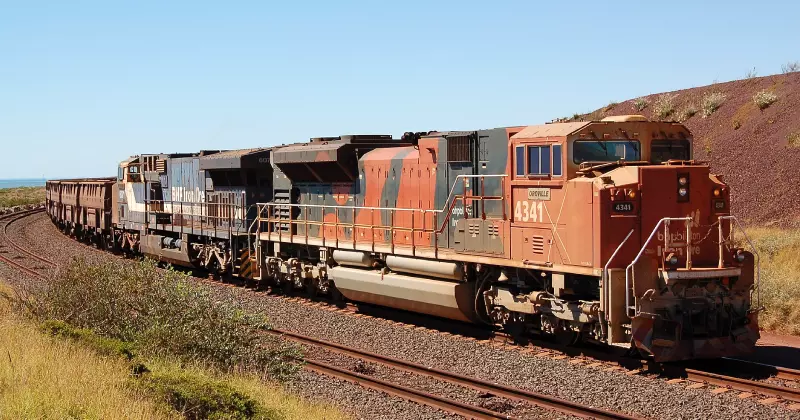
- Country: Australia
- Route: Yandi – Port Hedland
- Cargo: Iron Ore
- Weight: 99,732 t (219,867,724 lbs)
- Length: 7,352 m (4.568 mi)
- Wagons: 682
The BHP Iron Ore has a length of 7.352 km or 4.568 miles, making it the longest freight train in the world (also the longest train overall). When it was operated, it had 682 wagons and a weight of 99,732 tons (219,867,724 lbs) which also made it the heaviest train ever.
Operated by BHP, this train transported iron ore across a route between the Yandi mine and Port Hedland in Western Australia, back in 2011. It was used to transport 82,000 tons of iron ore and was driven by 8 powerful diesel locomotives from the manufacturer General Electric.
Six of these locomotives were combined in pairs of two and two of the 8 were individual. The train traveled a distance of 170 miles – a trip that took 10 hours and 4 minutes to complete and was operated by a single driver. This was the trip that broke all records that had come before and remains at the top of our list as the longest freight train in the world.
2. Ore Export Line (OREX) – 7,302 m
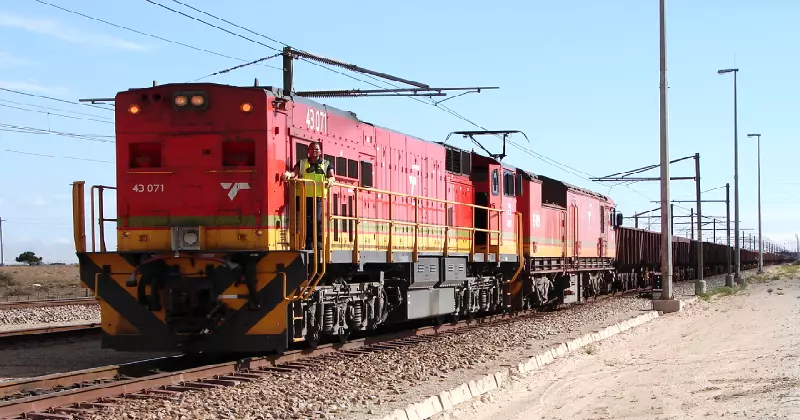
- Country: South Africa
- Route: Sishen – Saldanha
- Cargo: Iron Ore
- Weight: 71,765 t (158,214,742 lbs)
- Length: 7,302 m (4.537 mi)
- Wagons: 660
The second longest train to operate was the Ore Export Line at 7.302 km (4.537 miles) long – just a little shorter than the longest freight train on this list. It had 660 wagons and a weight of 71,765 tons or 158,214,742 lbs. Even though it was almost as long as the BHP Iron Ore train, it was significantly lighter.
This train operated across the Sishen-Saldanha route in South Africa, in 1989. This route connects various iron ore mines located across the Northern Cape. Each of the wagons contained a gross weight of 105 tons of iron ore.
Other than the 660 wagons, it had a caboose and a tank car. The train moved with the help of nine 50kV AC electric locomotives, as well as seven diesel locomotives. In total, it traveled a distance of 861 km or 535 miles.
3. Ekibastuz Run – 6,500 m
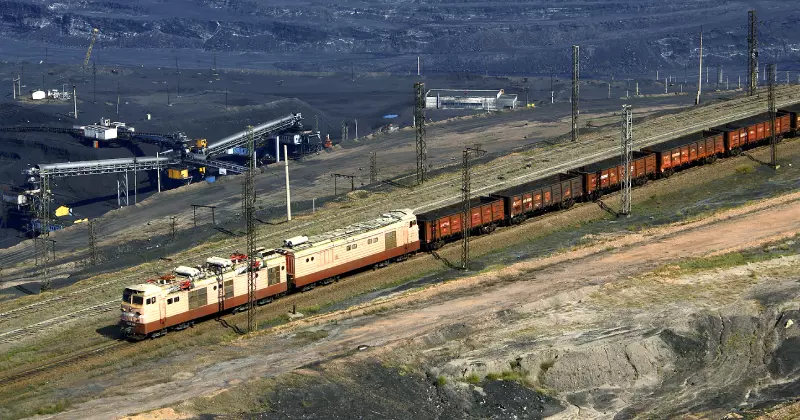
- Country: Soviet Union
- Route: Ekibastuz – Urals
- Cargo: Coal
- Weight: 43,400 t (95,680,621 lbs)
- Length: 6,500 m (4.039 mi)
- Wagons: 439
The Ekibastuz Run is third on the list of longest freight trains in the world. This freight train had an overall length of 6.5 km or 4,039 miles and was fitted with 439 wagons. It boasted a weight of 43,400 tons or 95,680,621 lbs.
This train operated in the Ural Mountains and was used to transport coal to heat and power plants in the region and neighboring areas. Operated by Kazakh Railway, it was among the fleet of trains that transported over 330 thousand tons of coal to plants in Ekibastuz and Krasnogorsk.
It made its record trip from the Ekibastuz station on February 20, 1986, while it weighed some 43,400 tons and measured a total of 6.5 kilometers after being loaded with coal.
4. Norfolk & Western Railway – 6,500 m
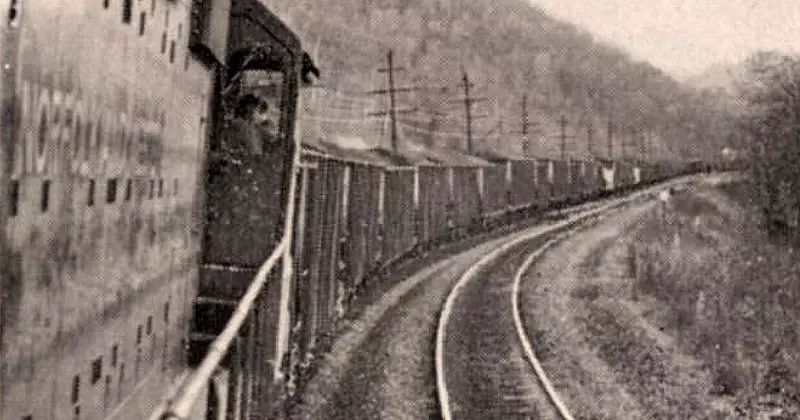
- Country: United States
- Route: Iaeger – Portsmouth
- Cargo: Coal
- Weight: 48,170 t (106,196,671 lbs)
- Length: 6,500 m (4.039 mi)
- Wagons: 500
The coal train from Norfolk & Western Railway had 500 wagons and a total length of 6.5 km or just a little over 4 miles. With a weight of 48,170 tons (106,196,671 lbs), it was a fairly heavy train for its length.
This freight train was operated by Norfolk & Western Railway and was used to transport coal along the Iaeger – Portsmouth route. The train was powered by a total of 6 locomotives that were spread throughout the length.
These locomotives were EMD SD45 six-axle diesel-electric, manufactured by General Electric. It made its record journey on 15 November 1967 from Iaeger (West Virginia) to Portsmouth (Ohio) while fully loaded with coal.
5. Union Pacific Railroad Company – 5,500 m
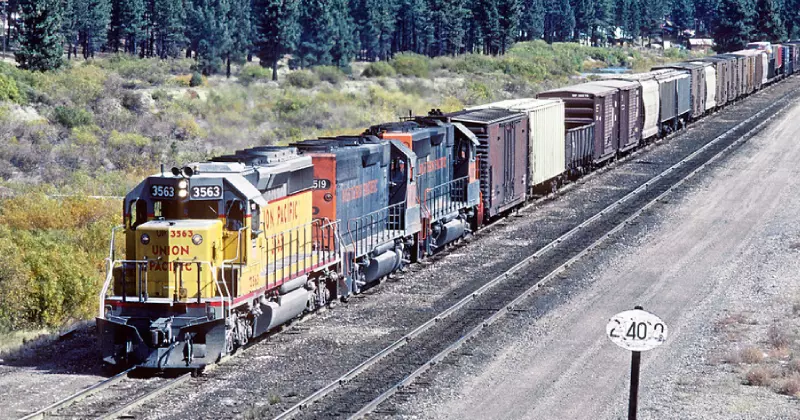
- Country: United States
- Route: Texas – Los Angeles
- Cargo: Containers
- Weight: 14,059 t (30,994,789 lbs)
- Length: 5,500 m (3.417 mi)
- Wagons: 296
This freight train is almost exactly a kilometer shorter than the previous one, with a length of 5.5 km or 3.417 miles. It was also significantly lighter than other long freight trains, as it transported shipping containers, instead of raw materials. It had a total weight of 14,059 tons or 30,994,789 lbs and was fitted with 296 container wagons.
Operated by Union Pacific Railroad Company, it made its journey from the 8th to the 10th of January 2010. Used as a general cargo train, it ran from Texas to Los Angeles, where it carried a total of about 600 shipping containers, double-stacked.
The train traveled at a maximum speed of 112 km/h or 70 mph and was powered by 9 diesel-electric locomotives.
6. BNSF Railway – 3,910 m
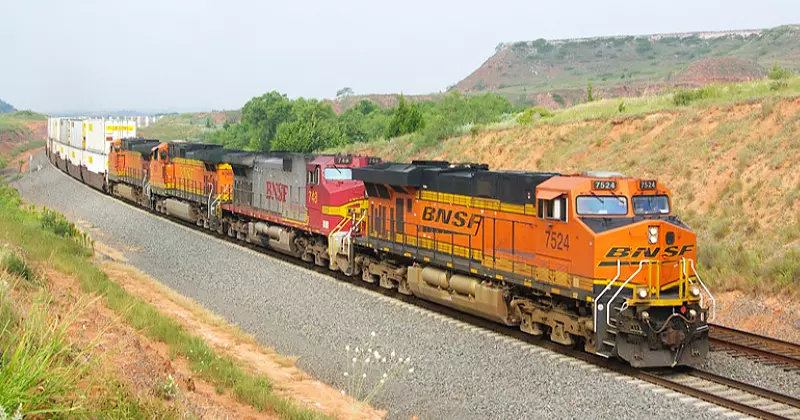
- Country: United States
- Route: Los Angeles – Clovis
- Cargo: Containers
- Weight: N/A
- Length: 3,910 m (2.430 mi)
- Wagons: 458
One of the longest trains by BNSF Railway had a total length of 3.91 km or 2.43 miles. This train carried 458 wagons and broke the previous record of the longest train by BNSF which was a little over 3 km in length with 435 wagons.
Operated by BNSF Railway, this freight train primarily moved shipping containers. It operated between Los Angeles and Clovis, New Mexico. It was powered by 7 locomotives spread across the train.
This freight run was a part of an initiative by the operator that started in 2007 to test longer trains. The previous record was set in January 2009, and the Log Angeles – Clovis route broke that record.
7. Indian Railway Vasuki – 3,500 m
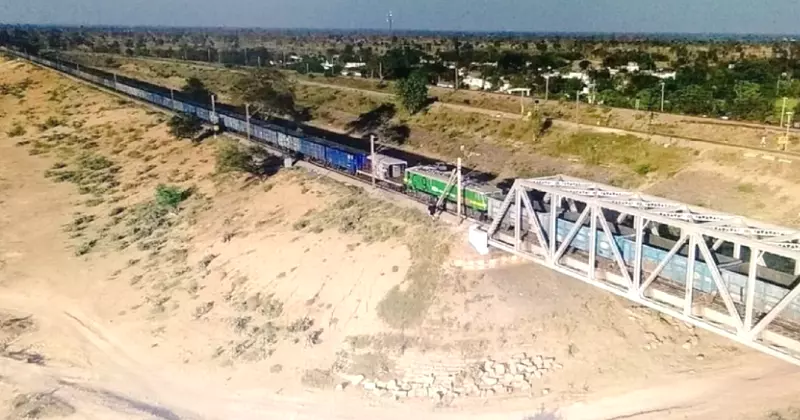
- Country: India
- Route: Bhilai – Korba
- Cargo: Mixed
- Weight: N/A
- Length: 3,500 m (2.174 mi)
- Wagons: 295
The Vasuki recently became the longest train operating in the South-East Central Railways zone in India. It had a total length of 3.5 km or 2.174 miles and had 295 wagons. It also beat the previous record of the SheshNaag train which measured 2.8 km in length.
Operated by Indian Railway, Vasuki was a mixed-use carriage train and achieved its length by combining five rakes of trains into one long unit, with the locomotives spread along the length of the entire train.
Its journey was between the Bhilai and Korba train stations which it completed in about seven hours. On this historic day in India, the train was operated by one driver and one assistant.
8. Estrada de Ferro Carajás (EFC) – 3,000 m
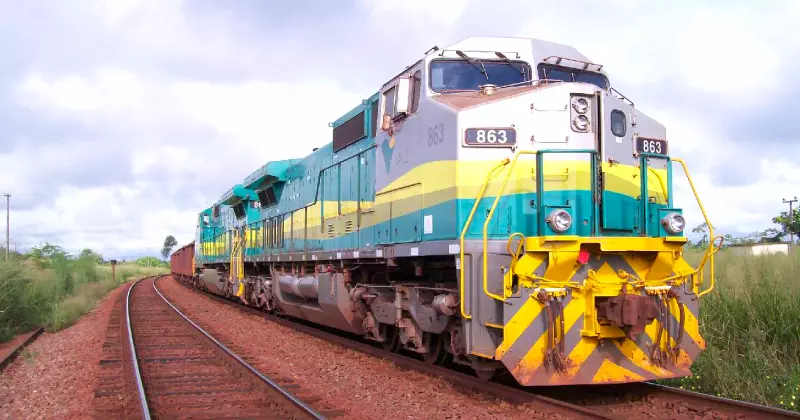
- Country: Brazil
- Route: Pará – Maranhão
- Cargo: Mixed
- Weight: N/A
- Length: 3,000 m (1.864 mi)
- Wagons: 330
The Estrada de Ferro Carajás (EFC) freight train measured 3 km in length, which is equivalent to 1.864 miles. At the time of its operation, it was the largest train in the world and was fitted with a total of 330 wagons.
The train was operated by EFC in Brazil and traveled on a route that connected the states of Pará and Maranhão. The 330 wagons transported by the multiple locomotives carried a mix of cargo.
The EFC Railway itself that the train traveled on was created in 1985. This rail network measured a total of 892 kilometers in length and is still used to transport everything from minerals and shipping containers to even passengers.
9. Indian Railway SheshNaag – 2,800 m
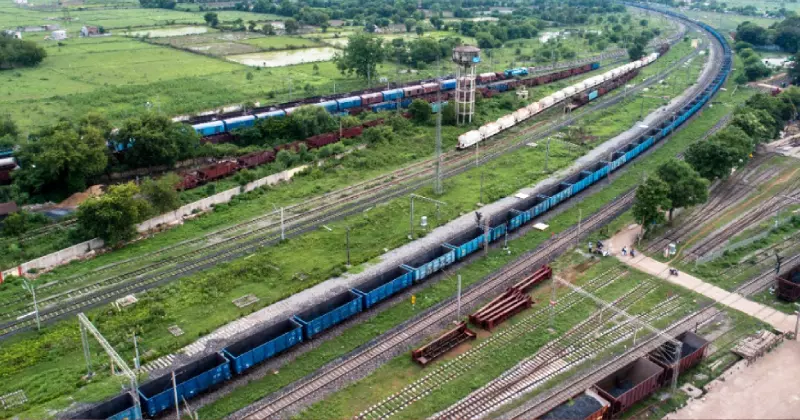
- Country: India
- Route: Nagpur – Korba
- Cargo: Mixed
- Weight: 15,000 t (33,069,339 lbs)
- Length: 2,800 m (1.739 mi)
- Wagons: 251
The SheshNaag had a total length of 2.8km (1.739 miles) and had 251 wagons, weighing 15,000 tons (33,069,339 lbs). It was an experiment that saw four rakes connected together to run as a single train, and it worked flawlessly.
Operated by Indian Railways, the SheshNaag ran along the South East Central Railway and completed a journey from Nagpur to Korba, in India. It combined four BOXN rakes and was powered by four sets of electric locomotives. The wagons were used to transport mixed cargo.
This train was part of a larger experiment to test longer trains in India, in order to save time and reduce transportation costs. Longer trains would help reduce the congestion of rail routes as well, which India was struggling with at that time.
10. Leigh Creek Ore Train – 2,800 m
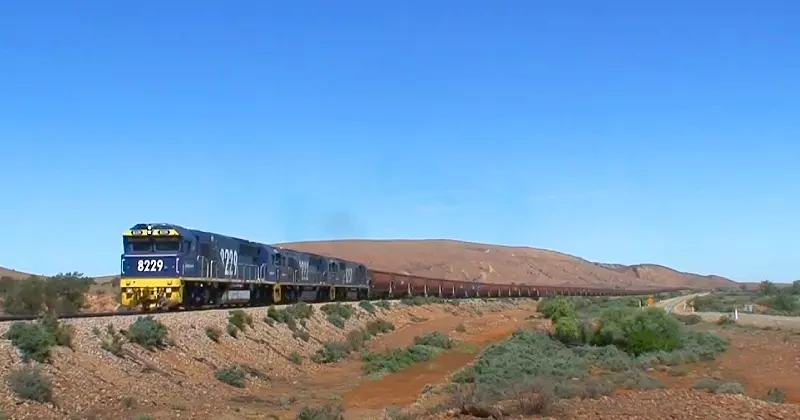
- Country: Australia
- Route: Leigh Creek – Port Augusta
- Cargo: Coal
- Weight: 11,000 t (24,250,848 lbs)
- Length: 2,800 m (1.739 mi)
- Wagons: 161
The Leigh Creek Ore Train measured 2.8 km in length, which is equivalent to 1.739 miles. During its run, it was equipped with 161 wagons and had a total weight of 11,000 tons, making it the lightest on this list as well.
This coal-hauling train completed its record journey from Leigh Creek to Port Augusta and is still in operation today. It travels some 520 kilometers during each trip to reach its destination.
With the amount of coal it carries, it is required to be pulled by three locomotives. These are 82 class diesel-electric locomotives from Pacific National. Take note that this is also the longest coal train to operate in Australia and shorter coal runs are still made today.

Get Free Course Access
If you enjoyed the article, don’t miss out on our free supply chain courses that help you stay ahead in your industry.

Gerrit Poel
Co-Founder & Writer
at freightcourse
About the Author
Gerrit is a certified international supply chain management professional with 16 years of industry experience, having worked for one of the largest global freight forwarders.
As the co-founder of freightcourse, he’s committed to his passion for serving as a source of education and information on various supply chain topics.
Follow us